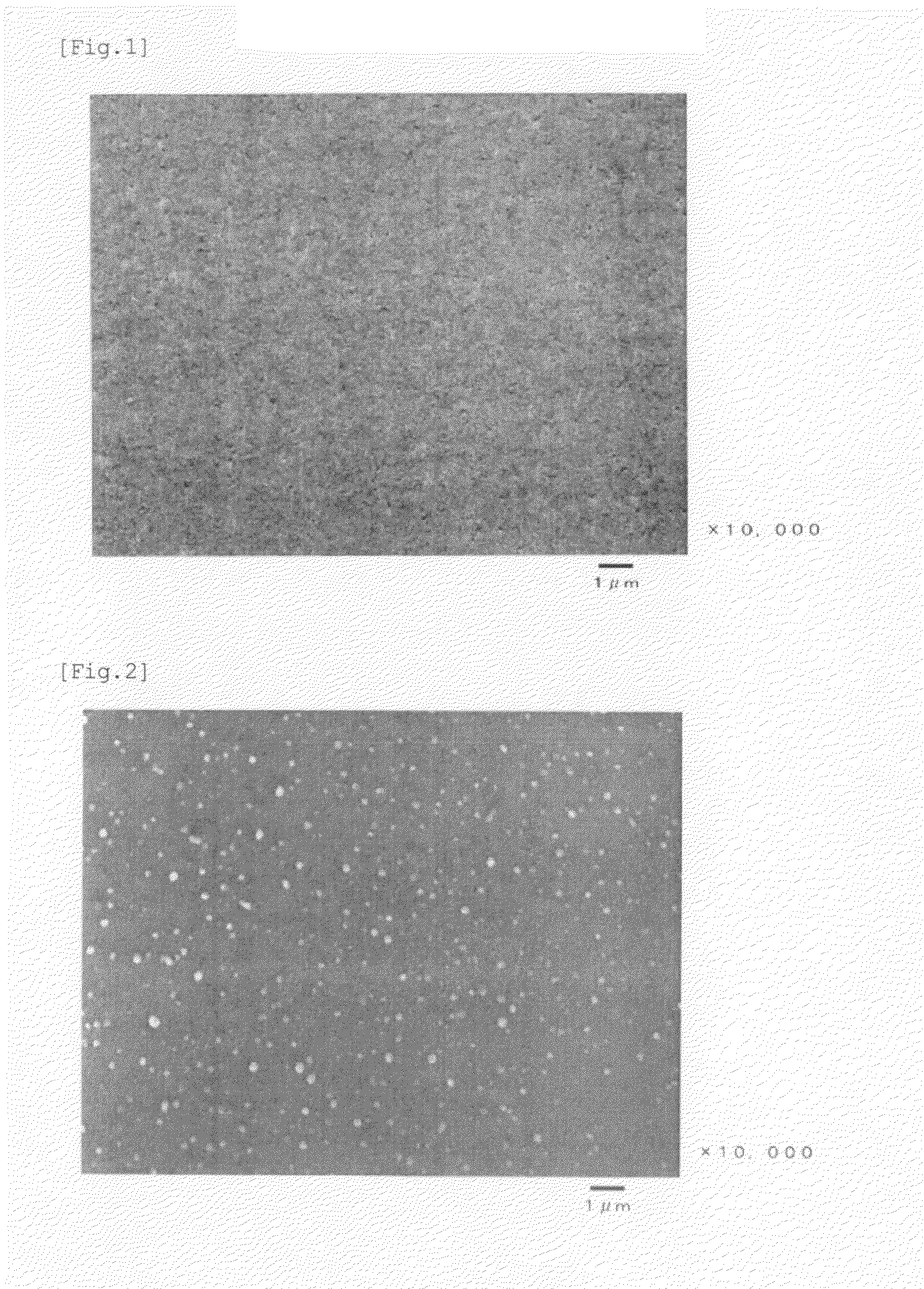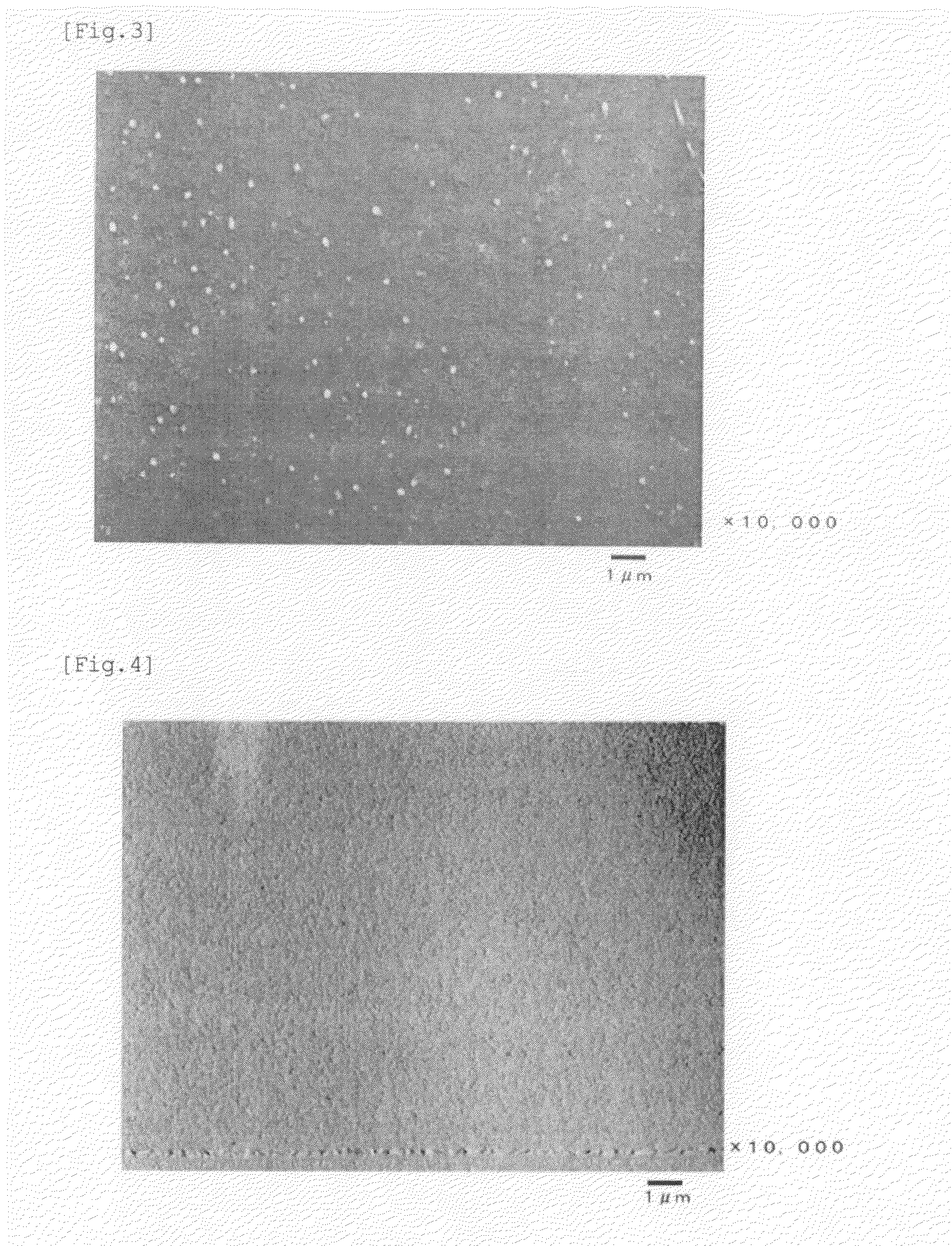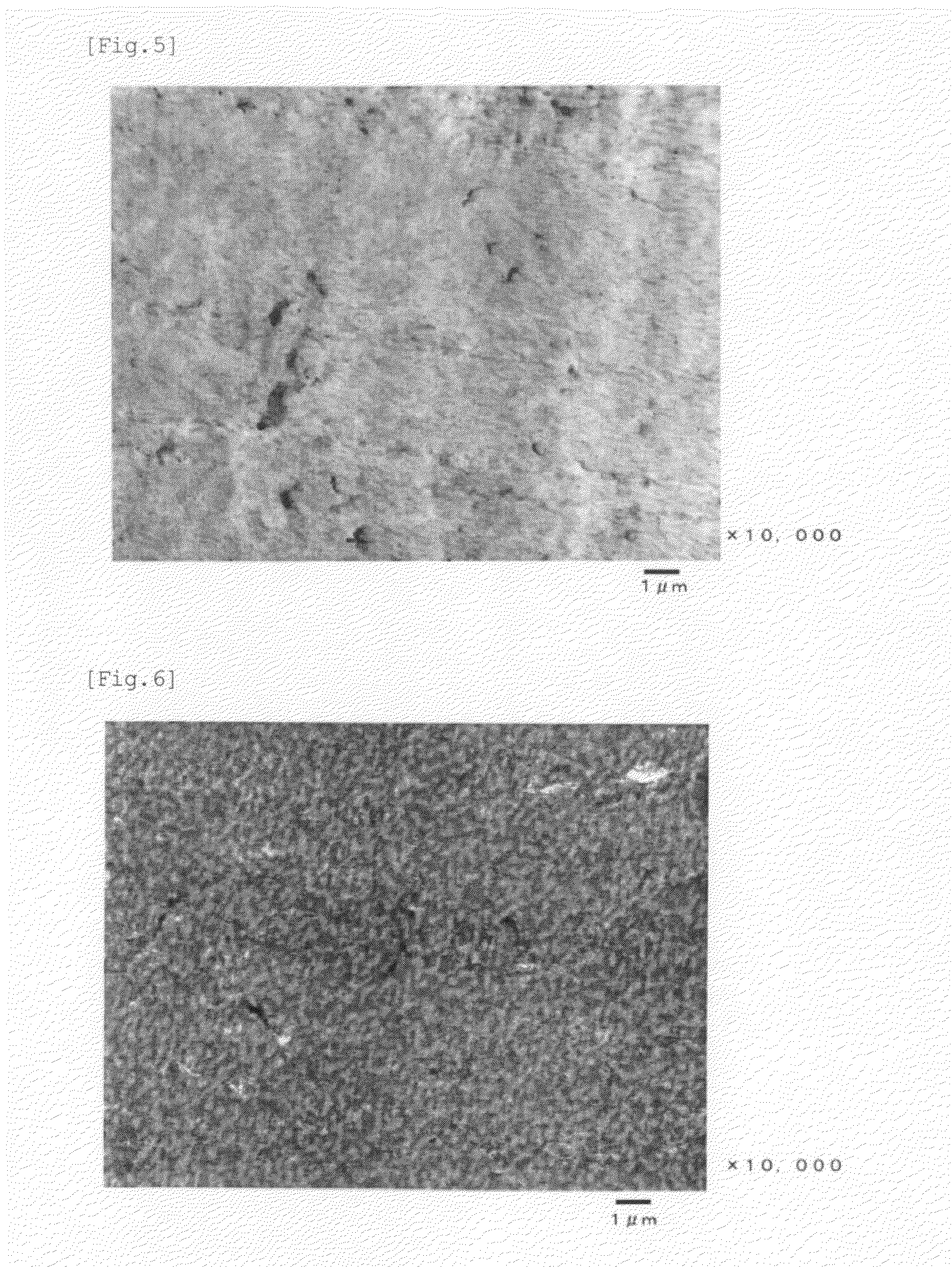Propylene-based polymer composition
a technology of polymer composition and propylene, which is applied in the direction of chemistry apparatus and processes, synthetic resin layered products, transportation and packaging, etc., can solve the problems of surface stickiness, insufficient practical heat resistance, and insufficient performance of propylene-based elastomers obtained in the prior art, and achieve excellent flexibility, transparency and heat resistance, and free from stickiness.
- Summary
- Abstract
- Description
- Claims
- Application Information
AI Technical Summary
Benefits of technology
Problems solved by technology
Method used
Image
Examples
examples
[0196]The present invention is further described with reference to the following examples, but it should be construed that the invention is in no way limited to those examples.
[0197]Evaluation Items
(1) Properties of Propylene-Based Polymer Compositions (Examples 1 to 5, Comparative Examples 1 to 4)
[0198](a) TEM Image Observation
[0199]A pressed sheet sample having a thickness of 2 mm was used and observed. The pressed sheet is prepared in the following manner. By the use of a hydraulic hot press molding machine preset at 190° C., the propylene-based polymer composition is preheated for 5 minutes, then subjected to press molding for 2 minutes under a pressure of 10 MPa and then cooled at 20° C. for 4 minutes under a pressure of 10 MPa to prepare a sheet of a given thickness, whereby a specimen is obtained.
[0200](b) Hardness (Shore A Hardness)
[0201]A pressed sheet sample having a thickness of 2 mm (the same sample as used in the TEM photograph observation) was allowed to stand for 72 h...
examples 1 to 5
[0285]Raw materials consisting of 10% by weight of (A) homopolypropylene (hPP) and 90% by weight of the propylene / ethylene / α-olefin copolymer (B-1, 2, 3, 4 or 5) were kneaded by a labo-plastomill (manufactured by Toyo Seiki Co., Ltd.) at 190° C. and 40 rpm for 3 minutes to obtain a propylene-based polymer composition. The propylene-based polymer composition was evaluated by the aforesaid methods (a) to (h). The results are set forth in Table 2.
reference example 1
[0287]100% by weight of (A) homopolypropylene (hPP) was kneaded by a labo-platomill (manufactured by Toyo Seiki Co., Ltd.) at 210° C. and 40 rpm for 3 minutes to obtain a propylene-based polymer composition. The propylene-based polymer composition was evaluated by the aforesaid methods. The results are set forth in Table 3.
PUM
| Property | Measurement | Unit |
|---|---|---|
| Tm | aaaaa | aaaaa |
| Tm | aaaaa | aaaaa |
| Tm | aaaaa | aaaaa |
Abstract
Description
Claims
Application Information
 Login to View More
Login to View More - R&D
- Intellectual Property
- Life Sciences
- Materials
- Tech Scout
- Unparalleled Data Quality
- Higher Quality Content
- 60% Fewer Hallucinations
Browse by: Latest US Patents, China's latest patents, Technical Efficacy Thesaurus, Application Domain, Technology Topic, Popular Technical Reports.
© 2025 PatSnap. All rights reserved.Legal|Privacy policy|Modern Slavery Act Transparency Statement|Sitemap|About US| Contact US: help@patsnap.com



